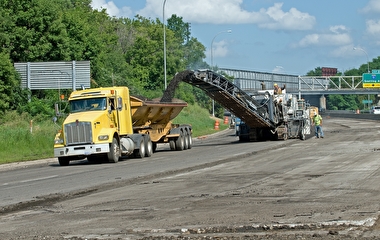
The legalization of cannabis for adult use in Minnesota has opened up a new frontier for drug policy in the state, particularly as it pertains to traffic safety. Ongoing research through the U of M seeks to better understand the safety implications of cannabis use so that law enforcement, legislators, and transportation departments can make informed decisions on how to regulate the substance.
The U of M School of Public Health launched the Cannabis Research Center (CRC) in November 2023 to serve as a hub for cannabis health and safety research. The CRC is collaborating with other organizations—both within and outside the U of M—to study a variety of topics including the relationship between cannabis use and traffic safety.
“We have just begun working on our research agenda, but we are planning to do studies on how cannabis legalization in Minnesota affects impaired driving and traffic crashes,” says Kathleen Lenk, a senior research fellow with the center.
Laying the groundwork
Since Minnesota is new to cannabis legalization for adult use, most of the center’s completed research used data from the first states to legalize cannabis for adult use about 10 years ago—Colorado, Washington, and Oregon.
One 2020 project compared data from Colorado, Washington, and Oregon with five non-legal cannabis states to study the relationships between cannabis legalization and rates of fatal motor vehicle and pedestrian-involved crashes. The results show no increased risk of fatal crashes with cannabis legalization.
Another project, in 2018, sought to understand perceptions and practices among law enforcement agencies in Colorado and Washington. Surveys indicated that cannabis-impaired driving was perceived as common, and the researchers concluded that impaired driving enforcement strategies could be improved.
In Minnesota, the CRC has been establishing a baseline, pre-legalization understanding of cannabis use and risks.
A 2024 project—conducted with the State Health Access Data Assistance Center—compiled self-reported rates of cannabis use and abuse and impaired driving in Minnesota using data from the National Survey on Drug Use and Health. In general, the report found that rates of cannabis-impaired driving in Minnesota were on par with national averages prior to legalization.
Moving forward
The research to date—both from other states and from Minnesota itself—lays important groundwork for the CRC’s plans moving forward as it seeks to understand how cannabis legalization will affect various issues, including traffic safety and enforcement in Minnesota.
“Traffic safety is an important area of research for the Cannabis Research Center,” says Traci Toomey, the center’s director.
Future research at the CRC, Toomey says, will involve conducting interviews with law enforcement professionals in Minnesota to better understand attitudes, practices, and challenges regarding cannabis legalization and traffic safety.
She also says that the CRC plans to analyze traffic incident and crash data in Minnesota over time.
“Results of these analyses can be useful for many stakeholders such as law enforcement agencies, legislators, the Minnesota Department of Transportation, and the general public,” Toomey says. “Research findings could be used to make recommendations to various stakeholders about how to best protect Minnesotans on our roads.”
—Sophie Koch, contributing writer

